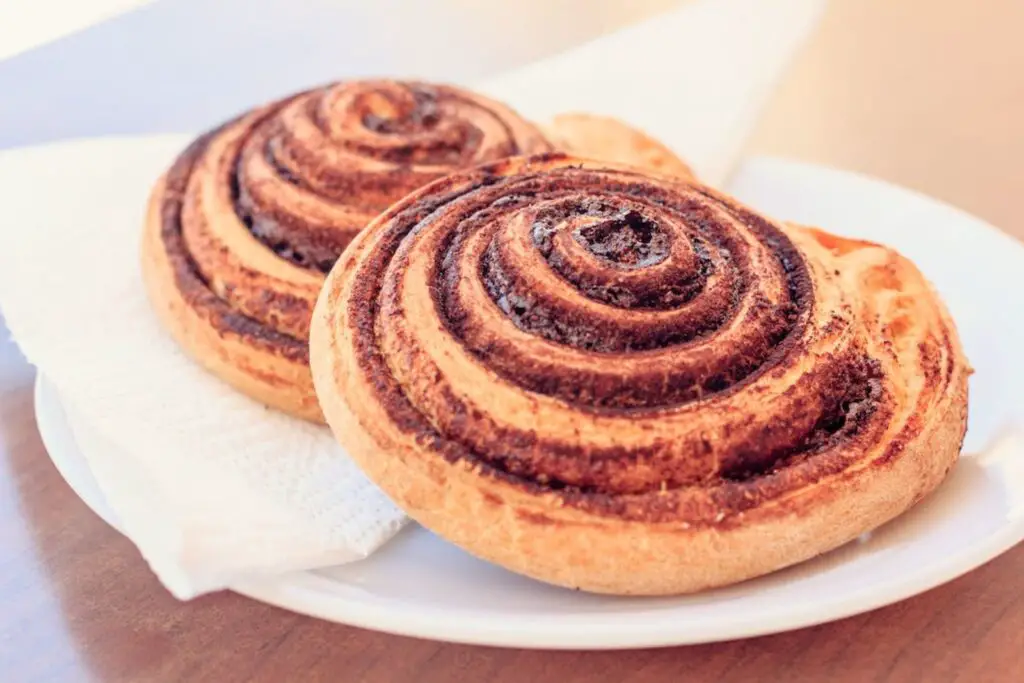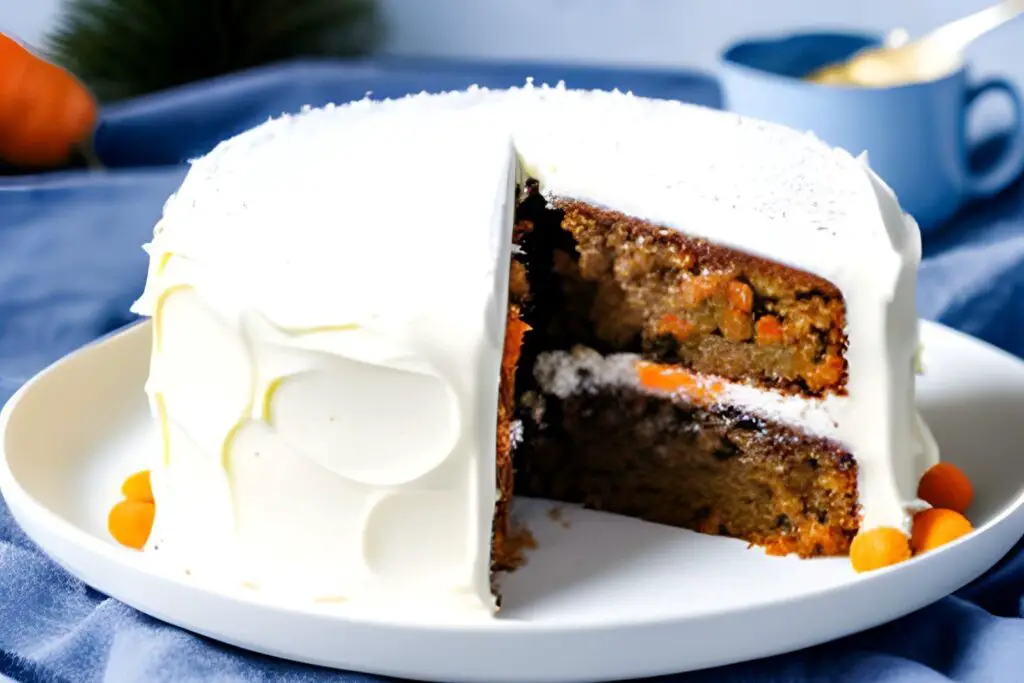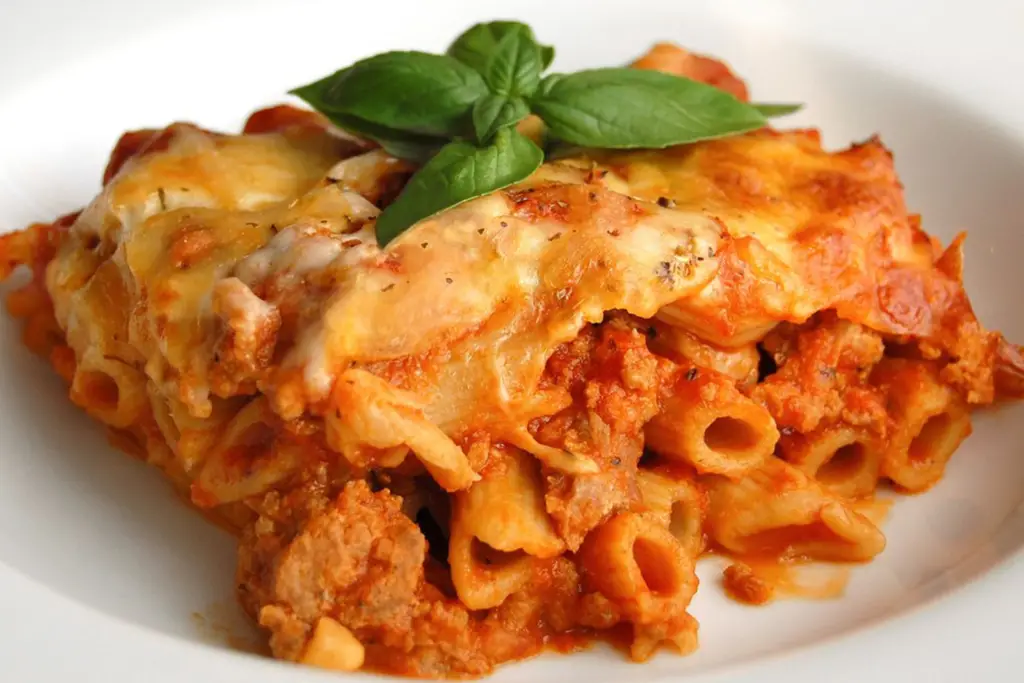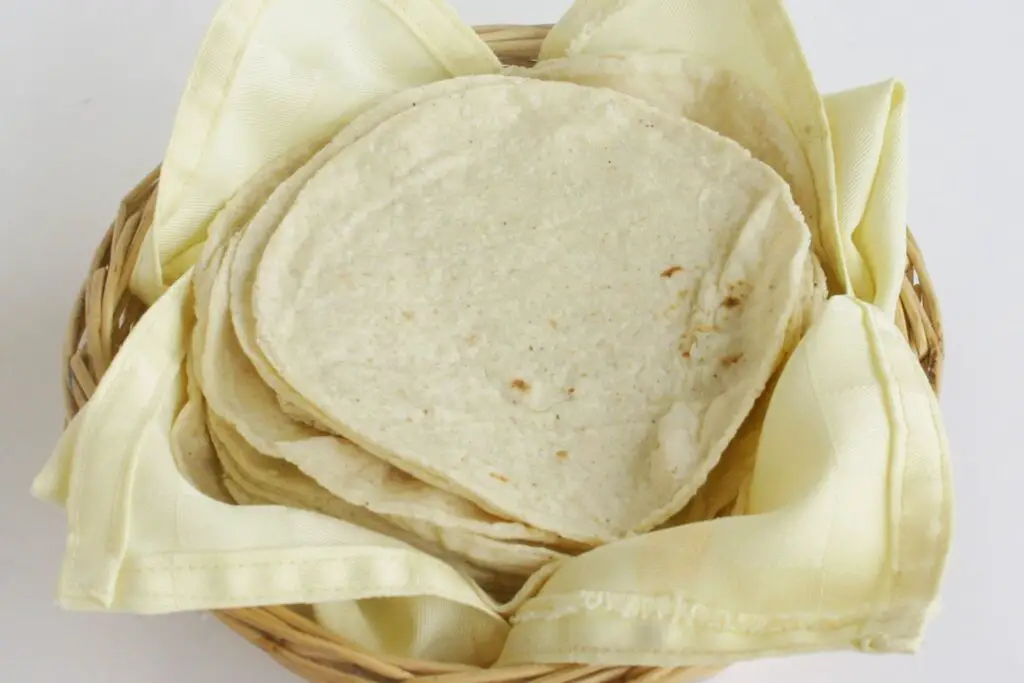
Cauliflower soup, a creamy and comforting dish that showcases the delicate flavors of cauliflower. This nutritious and versatile soup is loved by many for its smooth texture and subtle taste. Whether you enjoy it as a light lunch or a hearty dinner, cauliflower soup is a go-to option for those seeking a healthy and satisfying meal. But what if you have leftovers or want to prepare a large batch in advance? Freezing cauliflower soup is an excellent way to preserve its flavors and extend its shelf life. By freezing the soup, you can easily store it for future meals, making it a convenient option for busy days or when you need a quick and delicious meal. Join us as we explore the world of cauliflower soup and learn the best practices for freezing and reheating this comforting dish.
Here are the simple steps to freeze cauliflower soup:
Step 1: Prepare the Cauliflower Soup
Freezing cauliflower soup starts with ensuring that it is properly prepared and seasoned to your liking. Follow your favorite cauliflower soup recipe or use one that you trust. Here’s a breakdown of the steps involved in preparing the soup:
- Gather the ingredients: Collect all the necessary ingredients for your cauliflower soup recipe. This typically includes cauliflower florets, broth or stock (vegetable or chicken), aromatics like onions and garlic, seasonings such as salt, pepper, and herbs, and any additional ingredients like cream or cheese.
- Clean and chop the cauliflower: Rinse the cauliflower thoroughly under cold water to remove any dirt or debris. Remove the leaves and trim the tough stem. Cut the cauliflower into small florets, ensuring they are relatively uniform in size. This helps in even cooking and ensures consistent texture.
- Sauté aromatics: Heat a large pot or Dutch oven over medium heat and add some olive oil or butter. Add chopped onions and minced garlic to the pot and sauté them until they become fragrant and translucent. This step adds depth of flavor to the soup.
- Add cauliflower and broth: Add the cauliflower florets to the pot and stir them to coat with the aromatics. Pour in the broth or stock, covering the cauliflower completely. The liquid should be enough to cover the cauliflower, but not excessively so.
- Season and simmer: Season the soup with salt, pepper, and any other desired herbs or spices. Common choices include thyme, rosemary, or bay leaves. Bring the mixture to a boil and then reduce the heat to a simmer. Let the soup cook uncovered for about 15-20 minutes, or until the cauliflower is tender and easily mashed with a fork.
- Blend the soup (optional): Depending on your preference, you can leave the soup chunky or blend it for a smoother consistency. If you prefer a smooth texture, use an immersion blender or transfer the soup in batches to a countertop blender. Blend until you achieve the desired consistency
- Let the soup cool: Once the cauliflower soup is cooked and blended (if desired), remove it from the heat and let it cool completely. It’s important to allow the soup to reach room temperature before freezing to prevent condensation and ice crystals from forming during the freezing process.
Step 2: Choose Suitable Containers
When freezing cauliflower soup, it’s crucial to select containers that are specifically designed for freezer storage. Here’s why this step is important and some container options to consider:
- Freezer-safe containers: Look for containers that are labeled as freezer-safe. These containers are made from materials that can withstand low temperatures without cracking or breaking, ensuring the integrity of your soup during freezing.
- Tight-sealing lids: Opt for containers with lids that provide a secure and airtight seal. This helps to prevent air and moisture from entering the container, which can lead to freezer burn and affect the quality of the soup.
- Individual or portion-sized containers: Using smaller individual or portion-sized containers is beneficial for several reasons. Firstly, it allows you to freeze the soup in convenient serving sizes, making it easier to thaw and reheat only the amount you need at a time. This minimizes waste and provides flexibility for meal planning.
- Resealable freezer bags: Another option is to use resealable freezer bags. These bags are specifically designed for freezer storage and are made from thicker, more durable materials than regular plastic bags. They provide a space-saving alternative to containers and allow for easy stacking in the freezer. However, keep in mind that they may be more prone to leakage if not sealed properly.
- Consider labeling: Regardless of the container type you choose, it’s essential to label each container with the contents and date. This helps you keep track of the soup’s storage time and easily identify it later when selecting portions to thaw.
- Consider portion sizes: If you anticipate using different amounts of soup for various occasions, it can be helpful to freeze the soup in different portion sizes. For example, you might freeze some individual portions for quick lunches or freeze larger portions for family meals.
Remember, when filling containers or bags with cauliflower soup, leave some headspace at the top. This extra space allows the soup to expand as it freezes, preventing the containers from bursting. It’s recommended to leave around ½ to 1 inch of headspace, depending on the container size.
Step 3: Fill the Containers
Once you have selected suitable containers for freezing your cauliflower soup, it’s time to fill them up. Here’s a breakdown of the steps involved in this process:
- Cooled cauliflower soup: Ensure that the cauliflower soup has cooled completely before transferring it to the containers. This prevents condensation from forming inside the containers, which can affect the quality of the soup and lead to freezer burn.
- Leave headspace: When pouring the soup into the containers, leave some headspace at the top. This empty space allows the soup to expand as it freezes. As liquids freeze, they expand, and if there is insufficient room in the container, it can cause the lid to pop open or the container to crack.
- Container headspace guidelines: The amount of headspace required may vary depending on the type of container you are using. As a general rule, leave about ½ to 1 inch of headspace to accommodate the soup’s expansion. Refer to the manufacturer’s guidelines or instructions on the container for more specific recommendations.
- Resealable freezer bags: If you are using resealable freezer bags instead of containers, there’s a slightly different process. Carefully ladle the cooled soup into the bag, then press out excess air from the bag before sealing it tightly. This helps minimize air exposure and potential freezer burn. For added protection against leaks, you can double-bag the soup by placing the filled bag inside another resealable freezer bag.
- Avoid overfilling: Be mindful not to overfill the containers or bags. As the soup freezes, it expands, and if the container is filled to the brim, it may result in leaks or messy spills when placed in the freezer. Leave enough space for the soup to expand without compromising the container’s integrity.
- Wipe clean: After filling the containers or sealing the bags, wipe away any spills or drips on the rim or exterior. This ensures a clean and tight seal, preventing any potential contaminants from affecting the soup during freezing.
Step 4: Label the Containers
Labeling the containers is an essential step when freezing cauliflower soup. It helps you stay organized, keep track of the storage time, and easily identify the soup when you’re ready to use it. Here’s why labeling is important and how to do it effectively:
- Avoid confusion: Freezing multiple containers of cauliflower soup or other frozen items can quickly lead to confusion. By labeling each container, you eliminate any guesswork or confusion about what’s inside. This is particularly useful when you have various soups or dishes stored in the freezer.
- Storage time tracking: Labeling the containers with the date of freezing allows you to keep track of how long the soup has been stored in the freezer. This helps you prioritize consumption based on freshness and prevents the soup from being stored for an extended period, potentially affecting its quality.
- Easy identification: Clear labeling makes it effortless to identify the cauliflower soup among other frozen items in the freezer. When you’re searching for a specific soup or planning meals, the labeled containers save time and effort by providing clear information at a glance.
- Labeling methods: There are different ways to label containers, and you can choose the method that works best for you.
Here are a few options:
Permanent marker:
Use a permanent marker to write the date and contents directly on the container’s lid or side. Make sure the ink is visible and won’t smear or fade during freezing.
Label stickers:
Attach label stickers or adhesive labels to the containers. Write the necessary information, such as the date and contents, on the labels. This method allows for easy removal and replacement of labels if needed.
Freezer-safe tape:
Another option is to use freezer-safe tape. Write the relevant details on the tape and affix it to the container. This method ensures that the label stays intact and legible even in freezing temperatures.
Step 5: Freeze the Cauliflower Soup
Once you have properly labeled the containers or sealed the freezer bags with cauliflower soup, it’s time to freeze them. Follow these steps to ensure the soup freezes efficiently and stays in optimal condition:
- Choose a flat surface: Select a flat surface in your freezer where you can place the containers or freezer bags. This allows for even freezing and prevents them from tipping over or shifting during freezing.
- Baking sheet or tray: To provide an extra layer of stability and prevent potential spills or leaks, consider placing the containers or bags on a baking sheet or tray. This way, if any liquid does spill or leak, it will be contained on the sheet or tray, making cleanup easier.
- Arrange for air circulation: Proper air circulation is essential for efficient freezing. Make sure to arrange the containers or bags in a way that allows air to circulate around them. Avoid overcrowding the freezer space, as this can hinder proper airflow and result in uneven freezing.
- Leave space between containers: Leave some space between the containers or bags to allow cold air to circulate freely around each one. This helps promote faster and more consistent freezing. Additionally, leaving space between the items allows for easier removal of individual portions when needed.
- Freezing time: The cauliflower soup will take some time to freeze completely. The exact freezing time will depend on factors such as the volume of soup, the temperature of your freezer, and the type of containers used. As a general guideline, cauliflower soup may take several hours to freeze solid.
- Freezer organization: As you place the containers or bags in the freezer, consider how you want to organize them. You may want to group similar items together or arrange them in a way that makes it easier to access specific portions or soups later on.
How long can cauliflower soup last in the freezer?
Cauliflower soup can typically last in the freezer for about 2 to 3 months without a significant loss in quality. However, for the best taste and texture, it is recommended to consume the frozen cauliflower soup within 3 to 4 months. Proper storage, labeling, and adherence to thawing and reheating guidelines are crucial to maintaining the soup’s optimal quality during its frozen storage period.
Step 6: Thaw and Reheat
When the time comes to enjoy your frozen cauliflower soup, it’s important to follow proper thawing and reheating methods to ensure the best flavor and texture. Here’s how to thaw and reheat the soup effectively:
Thawing the soup:
- Refrigerator thawing: The recommended method for thawing frozen cauliflower soup is to transfer it from the freezer to the refrigerator. Place the container of soup in the refrigerator overnight or for several hours until completely thawed. This slow and gentle thawing process helps maintain the soup’s quality.
- Microwave defrosting: If you need to thaw the soup more quickly, you can use the defrost setting on your microwave. Follow the microwave manufacturer’s instructions to defrost the soup, making sure to use a microwave-safe container if you’re reheating it directly in the microwave.
Reheating the soup:
- Stovetop reheating: Once the soup is fully thawed, transfer it to a pot or saucepan. Heat the soup gently over low to medium heat on the stovetop, stirring occasionally to ensure even heating. Avoid boiling the soup, as it can affect the texture. Heat the soup until it is heated through, reaching a safe internal temperature of 165°F (74°C).
Microwave reheating:
- For individual portions, you can use the microwave to reheat the soup. Place a portion of thawed soup in a microwave-safe bowl or dish and cover it to retain moisture. Heat the soup in short intervals, stirring between each interval to ensure even heating. Check the temperature throughout the process, and once the soup reaches 165°F (74°C), it is ready to be enjoyed.
- Stir and adjust seasoning after reheating the cauliflower soup, give it a gentle stir to ensure that the temperature is consistent throughout. Taste the soup and adjust the seasoning if needed, adding salt, pepper, herbs, or spices to enhance the flavors to your preference.
Step 7: Check the Consistency
After reheating your cauliflower soup, it’s essential to check its consistency to ensure it is smooth and satisfying. Here’s why checking the consistency is important and how to make any necessary adjustments:
- Reheating effects: As cauliflower soup is thawed and reheated, the texture may change slightly. It’s possible for the soup to separate or become watery due to the heating process. Checking the consistency allows you to address these issues and restore the soup to its desired texture.
- Whisking or blending: If you find that the soup has separated or become watery, don’t worry—it can be easily remedied. Using a whisk or an immersion blender, gently whisk or blend the soup to emulsify the ingredients and bring them back together. This process helps restore the smooth and creamy consistency of the soup.
- Adjusting seasonings: While checking the consistency, it’s also a good opportunity to taste the soup and adjust the seasonings if needed. The freezing and reheating processes can sometimes slightly affect the flavors of the soup. Take a moment to taste the soup and add any additional salt, pepper, herbs, or spices to enhance the overall taste and balance the flavors to your liking.
- Serving considerations: Once you have achieved the desired consistency and adjusted the seasonings, the cauliflower soup is ready to be served. Ladle it into bowls or soup plates and garnish with your preferred toppings, such as fresh herbs, a drizzle of olive oil, or a sprinkle of grated cheese. Pair it with crusty bread or other accompaniments of your choice.
Other related questions
Can you refreeze cauliflower soup?
It is generally not recommended to refreeze cauliflower soup once it has been thawed. Refreezing can negatively affect the texture, flavor, and overall quality of the soup. To maintain the best taste and food safety, it is advisable to thaw only the amount of soup needed for consumption and store any remaining portions in the refrigerator for a few days.
How do I know if the cauliflower soup has gone bad after being frozen?
To determine if frozen cauliflower soup has gone bad, several indicators can be observed. Signs of spoilage include an off or unpleasant odor, unusual texture, or discoloration. If the soup appears moldy or exhibits an unusual taste, it is best to discard it to avoid the risk of foodborne illness. It is crucial to follow proper freezing and storage practices to maximize the shelf life and quality of frozen cauliflower soup.
Can I freeze cauliflower soup with dairy or cream?
Yes, you can freeze cauliflower soup that contains dairy or cream. However, it’s important to note that freezing can sometimes affect the texture of dairy-based soups. When freezing cauliflower soup with dairy or cream, it’s recommended to slightly undercook the soup to prevent curdling. Additionally, consider stirring the soup well after thawing and reheating to help restore its creamy consistency.
Are there any special considerations for freezing cauliflower soup with added vegetables or meat?
When freezing cauliflower soup with added vegetables or meat, there are a few key considerations to keep in mind. Firstly, ensure that the vegetables are blanched before adding them to the soup, as this helps preserve their texture and color during freezing. For meat, it is recommended to cook it thoroughly before adding it to the soup to ensure food safety. Additionally, it’s advisable to label the containers with the specific ingredients to easily identify them when reheating the soup.








